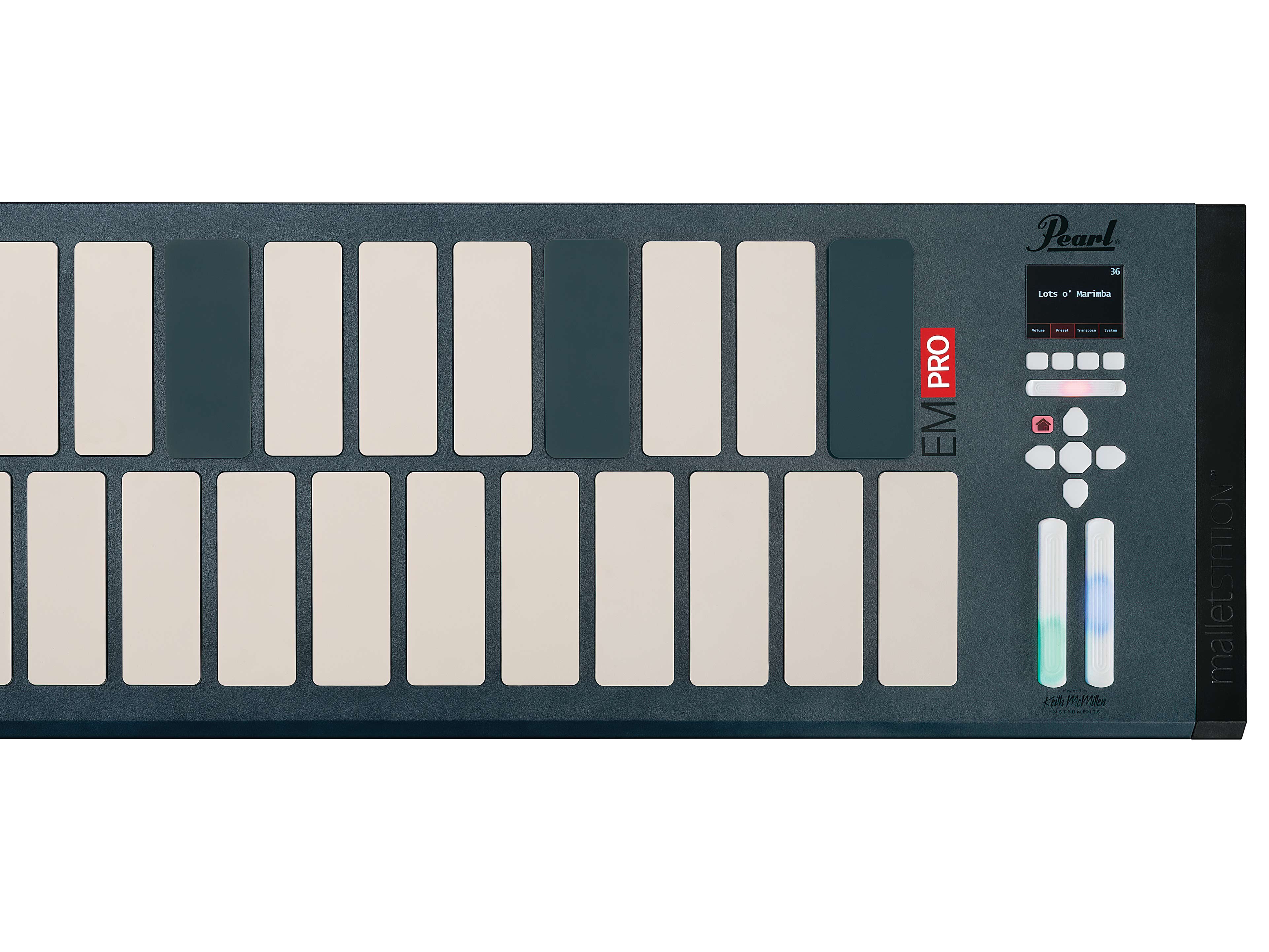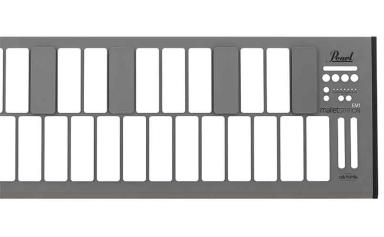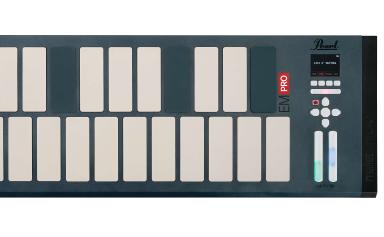malletSTATION EM1
The malletSTATION model EM1 is a full-sized 3.0-octave adjustable range electronic mallet controller designed for all players in any genre, from the beginning student through the gigging professional. The adjustable low-note range function allows you to set the fundamental diatonic note of the instrument. Need a low D xylophone? No problem! The malletSTATION is powered exclusively by Mac, PC, iPad, iPhone, and Android devices through USB Bus Power, allowing performance almost anywhere with minimal set-up and equipment. Designed in collaboration with Keith McMillen Instruments, malletSTATION’s tech-forward design features KMI’s Smart Fabric Sensor technology, allowing the silicone bar material to have an extremely sensitive, natural response, including mallet dampening and aftertouch control, and all can be easily tailored to your individual playing style. The EM1 features a master control section with three programmable faders, four programmable buttons, and the fixed function low note and octave shift buttons. In addition, three assignable pedal inputs allow for flexibility in performance, such as sustain, expression, or any MIDI parameter of your choice. These controls are fully programmable through a software editor, so changing your configuration is as easy as clicking a mouse. The EM1 malletSTATION is also the most affordable mallet percussion controller on the market. The ultra-thin, lightweight chassis allows for easy portability, and the flexible mounting options provide many different ways of using your instrument. This is the only controller that will grow with you throughout your playing career—from music apps on your phone or tablet to professional digital audio workstations and sound libraries—your sounds, and even the instruments you play, are only limited by the software you run. All updates and supporting documents for the malletSTATIONare available on our website.


